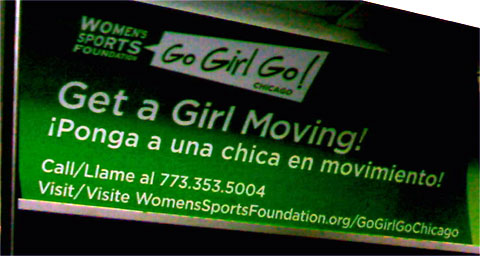What Is A TLD And Why Should You Care
What is a TLD and why should you care? If you have anything to do with the Internet or are a businessperson, you should know what it is.
TLD stands for “top-level domain” and is the last part of a domain name. For example, in the domain name thehotiron.com, the TLD is “com.” Where those who register and manage domain names use the acronym frequently, many others do not. As I plan on using it in many future blog posts on domain names, I wanted to define it ahead of time.
The acronym is sometimes used by itself or it can be prefixed by other letters to further quality a type of TLD. A gTLD is a “generic” top-level domain, and generic means anyone can register a domain name with a gTLD. Examples are .com, .net and .org. A ccTLD is a “country-code” TLD, and are ideally for entities which reside in a specific country. Examples are .us, .au (for Australia) and .dk (for Denmark). An sTLD is a “sponsored” TLD and they are only available to certain groups or classifications. Examples are .aero (for the air transport industry), .coop (for cooperative associations) and .museum (for museums). For a complete list of TLDs, view the list from the Internet Assigned Numbers Authority (IANA) for all global TLDs.
Knowing about other TLDs is helpful in choosing domain names to register or in analysis of a URL with a TLD you may not be familiar with. Each TLD is managed by an organization which sets the rules for registrations. For example, some ccTLDs require the registrant to be based in that country, and others do not. If you are a business and have operations or sales in a country, it may be of interest to register the name of your business or brand with a specific ccTLD or sTLD as appropriate.
TLDs of all forms are approved and assigned by Internet Corporation for Assigned Names and Numbers (ICANN). There have been cases where a TLD was requested but not approved, and a notable example is .xxx and .sex. Some TLDs have been retired, such as .cs (for Czechoslovakia), which were replaced by .cz (for Czech Republic) and .sk (for Slovak Republic).
Of interest to many is a move by ICANN to open the floodgates on any gTLD. For example, .pizza, .beer or .gum. This has been met with much controversy, as it would require an effort for a company to register its name and brands with all new gTLDs, and the opportunity for violation of trademarks by entities who may register domain names with their brand for some random gTLD. The International Olympic Committee (IOC), which is a staunch defender of its brand for the word “Olympics” globally, has already contacted ICANN with its concern over open gTLDs and to “take action” as required. My guess is the IOC would have an issue with a name like olympics.beer?
In the future, I will reference this document on TLDs in other posts here at The Hot Iron as well as follow-up on news and activities surrounding TLDs, especially the opening of gTLDs.
Did you enjoy reading this? You are welcome to subscribe to The Hot Iron by RSS feed or by email.
Domain Names Cure Long URL Paths
By its definition, a URL – or uniform resource locator – directs you to the exact location of content on a Web site. Depending on the domain name, structure and naming standards of a Web site, a Web page URL can be short or extremely long. Maybe even too long to be useful?
The photo below is of an ad I saw recently on a Chicago subway car, featuring a URL for the Women’s Sports Foundation’s GoGirlGo! Chicago program.
Where I normally would feel bad for calling out something for a non-profit organization, it appears to be well-funded and founded by tennis legend Billie Jean King, so I feel it is my duty to talk about it.
Now close your eyes and see if you remember the Web site. Well? Did you get it verbatim? Now imagine bouncing around on an Orange Line car on the way to Midway airport, and see if you can remember it any easier!
This is a perfect example of acquiring an additional domain name and use it on the advertising, where it would point directly to the desired page. Now close your eyes and see if you can think of some short, catchy and easy-to-remember domain names? Probably a little easier than remembering the printed URL, whether you’re on the Orange Line or not.
Where your main Web site URL can be whatever you choose, keep in mind how you will be using it, and if it doesn’t work well in a certain medium – whether printed in the newspaper or a poster or spoken on the radio or TV – the small cost of an additional domain name can do wonders for driving traffic from the offline world.
Did you enjoy reading this? You are welcome to subscribe to The Hot Iron by RSS feed or by email.
Domain Names Are Case Insensitive
Did you know domain names are case insensitive? Had you even thought about it?
This is a question I have been asked a few times, so I thought I’d write about it and share with all. From a technical standpoint, domain names ignore case. Therefore, it you are typing in a domain name in a browser, you can use uppercase or lower case letters and it won’t matter. For a more technical description, read this article from the Internet Engineering Task Force on domain name case.
Why this question comes up is when people are presenting a domain name in print, whether in paper form or on a Web page or a PDF document. Typically this is if they want to capitalize one or more names that make up a domain name. For example, the domain name for The Hot Iron can be presented and entered into a browser as thehotiron.com, TheHotIron.com, theHotIron.com… you get the gist of it.
URLs May Be Case Sensitive
Despite the domain name being case insensitive, a URL may be case sensitive. The domain name portion will not be, but on some Web servers, the remainder of the URL may have both uppercase and lowercase characters, and you will need to be careful to enter them properly.
If you are planning on displaying a domain name on a billboard, be as creative as you’d like and mix character case all you want. If you are planning on displaying a URL on a banner… well, on second thought get another domain name to redirect to that URL.
Did you enjoy reading this? You are welcome to subscribe to The Hot Iron by RSS feed or by email.
Use Domain Names To Directly Navigate Within A Large Web Sites
Web sites can vary in size. In some cases, you may want to take a Web visitor deep within a Web site without having them click multiple times to navigate through content they don’t need to see. You can do this 2 ways – 1 way is to publish a long URL that is to the exact location of the content, the other is to use a domain name that redirects to that long URL.
This came to mind recently when I saw a commercial for Shell promoting a concept called “Real Energy” where at the end they displayed the following URL verbatim:
The announcer read the URL as follows:
“Shell dot com US real energy”
Note the announcer did not read the slashes! Where this is not incorrect, wouldn’t it have been more effective if it was displayed and read as shellrealenergy.com? Note that as of this writing, this is an unregistered domain name.
If this domain name was used, it could have server multiple purposes. On a quick Web search, there are other versions of this commercial for other countries. By going to one domain name, it could have first loaded a Web page that could have detected where the Web visitor was coming from and automatically directed them to the appropriate country’s Web page? Or it could have displayed a map or list of countries for the Web visitor to select from.
One address, multiple destinations, all thanks to a domain name. I wonder if Shell will go out and register the domain name now?
Did you enjoy reading this? You are welcome to subscribe to The Hot Iron by RSS feed or by email.
Manage You Own Short URLs For Fun and Profit
 Years ago I read an interview of Web inventor Tim Berners-Lee where he said he was surprised people and business would promote URLs, displaying them in print, advertising, et. al. Not surprising as the idea of the Web is all about linking. Some URLs are better for this as they are short and easy to remember, and others are long and cumbersome.
Years ago I read an interview of Web inventor Tim Berners-Lee where he said he was surprised people and business would promote URLs, displaying them in print, advertising, et. al. Not surprising as the idea of the Web is all about linking. Some URLs are better for this as they are short and easy to remember, and others are long and cumbersome.
It is the long URLs that are made easy with services that all you to create a unique, short URL that redirects to the long one. This presumably started to make them easy to type and handle, and they became exponentially popular with short messaging services like Twitter. And Twitter actually automatically rewrites short URLs using the original service, TinyURL.
But have you seen some of these URLs? Where in some cases you can pick a text string, most common ones are taken and the new URL is structured as a domain name followed by random characters. It is short but not memorable. And do you have control over it? Unfortunately no. That is, unless you manage your own.
This is exactly what I decided to do – create a Web application for creating and managing short URLs. I call it psURL.com. For example, the short URL to the Dunkirk Systems, LLC Web site is http://psurl.com/dk. You’re probably wondering why anyone would want to do this? Here’s a few compelling reasons:
- Control your own destiny – I have written on controlling your own destiny before and it something I firmly believe in, especially in turbulent economic times.
- Brand your short URLs – You can choose your own domain name to synchronize branding with your company and give further meaning to them.
- Choose the URL string – No need for random characters, as what goes after the domain name is under your control.
- They can be changed – Did the long URL itself go away, or do you want to redirect the short URL to something else? You have the ability to easily change the destination URL.
- They are measurable – From basic logging and reporting to third-party analytics tool integration, you can measure them like any Web page or Web site.
- You can monetize them – Where this is not in place right now, it is possible to add interstitial pages to display ads before redirection is complete to the final URL.
Dunkirk Systems, LLC has developed the first release of its short URL application and is offering this as a hosted service. Of course you would have to choose your own domain name, but many good names are still available. Whether you choose to manage your own short URLs or not, it is good to know this is an option that works to your advantage.
Did you enjoy reading this? You are welcome to subscribe to The Hot Iron by RSS feed or by email.


